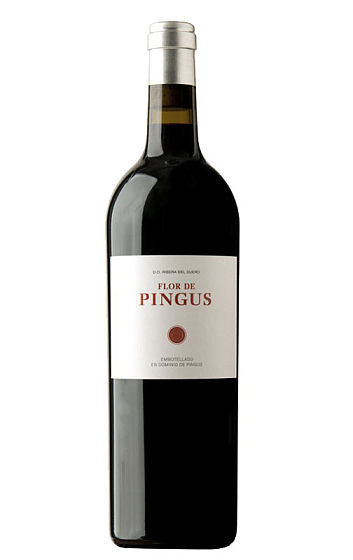Flor de Pingus 2018
Descripción
Como ya es costumbre, cada nueva añada de Flor de Pingus repite altas valoraciones de los críticos más prestigiosos. El hermano pequeño de Pingus alcanza, cosecha tras cosecha, cotas espectaculares de calidad, personificando la excelencia dentro de la D.O. Ribera del Duero. Sutil, fino, con taninos muy pulidos y aromas a fruta negra madura, con un toque especiado y mineral.
Ficha técnica
Cata
Viñedo y elaboración
Fermentó con levaduras naturales y también maloláctica natural y maduró durante 18 meses en barricas de roble francés, 25% nuevas.
Opinión de los críticos
Like the rest of the wines, I tasted the bottled 2018 Flor de Pingus—which I tasted unbottled last year—next to the 2019 that will be bottled in June 2021, and it was great to see how the wines reflected the character of the two vintages. All of the estate vineyards are certified organic, and this is pure Tinta del País, the local strain of Tempranillo, from 40 hectares in five different locations (parajes) of the village of La Horra where the Pingus vineyards are also located. It fermented with natural yeasts and also natural malolactic and matured for 18 months in French oak barrels, 25% new. The day I tasted it, the wine was oakier than normal, but the amount of new oak is not higher than normal. The palate showed much better, with very fine and polished tannins. There is freshness, even red fruit and good balance. The oak should integrate with a little more time in bottle. 120,000 bottles produced. It was bottled in July 2020.
Peter Sisseck did a green harvest in his Flor de Pingus vineyards in 2018 to reduce the crop in what was often an abundant year. But the result is still a very graceful, scented expression of these La Horra vines, with no sign of over concentration. Benefiting from the reduction in new oak to 25% in recent years and the addition of 2% Garnacha for the first time, this is detailed, fresh and appealingly pure with silky tannins, succulent summer berry fruit and the palate length that's a feature of the Dane's winemaking style. 2022-28
A ripe, layered red with plum, black-cherry and some toasted oak. It’s full-bodied with rounded tannins, but there’s a lively edge to the wine as well. Subtle and fine. Sort of shy still. Drink or hold.









Añadas: 2022 2021 2020 2018
Esta añada no tiene valoraciones todavía. Pincha en las otras añadas para ver sus valoraciones.
Mora y humo danzan en copa; en boca, fuerza y seda. Un susurro oscuro que se queda, noble y profundo ¡Excelente con queso viejo zamorano!
Para repetírrrrrrr